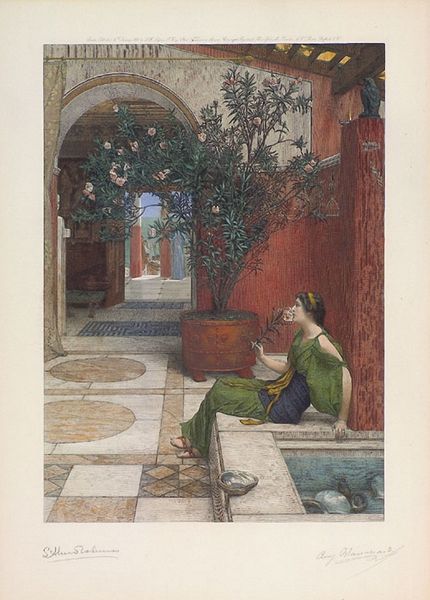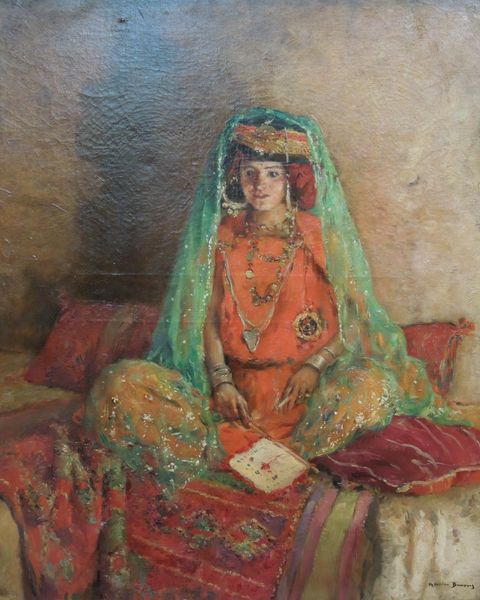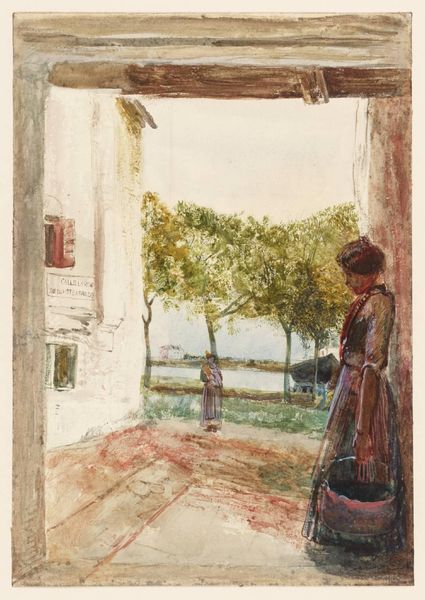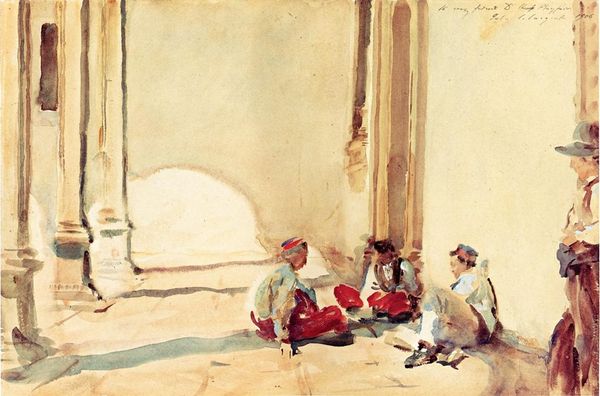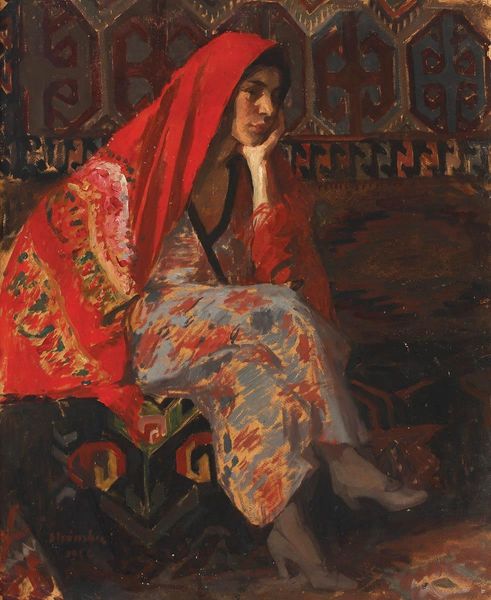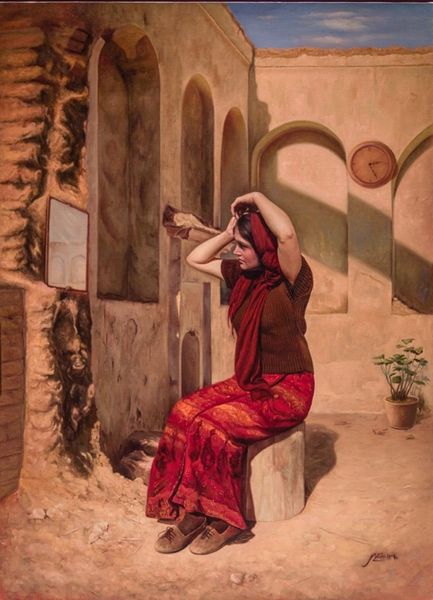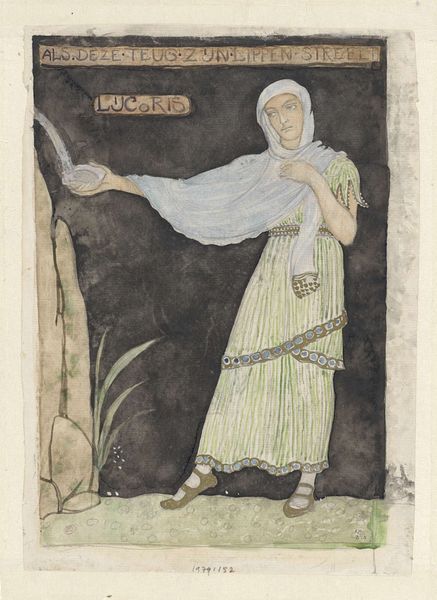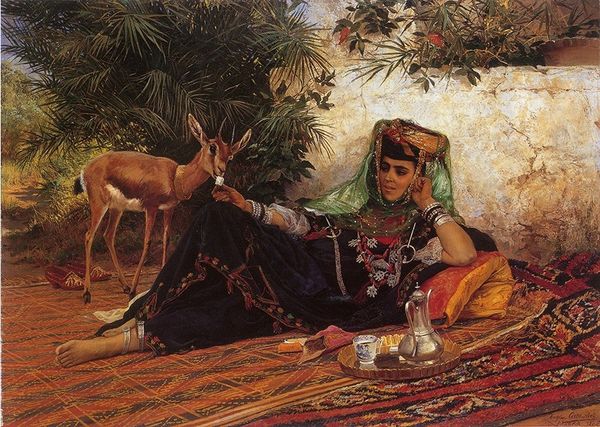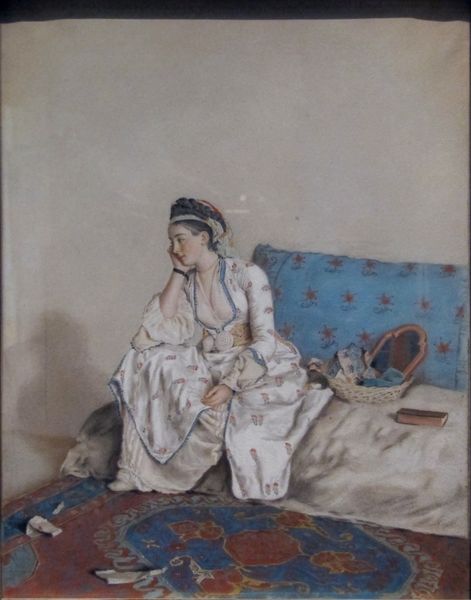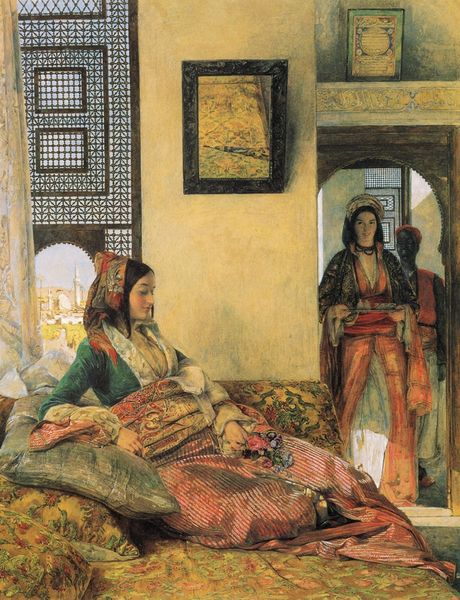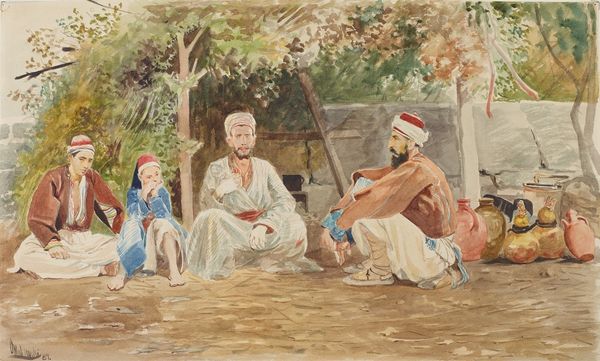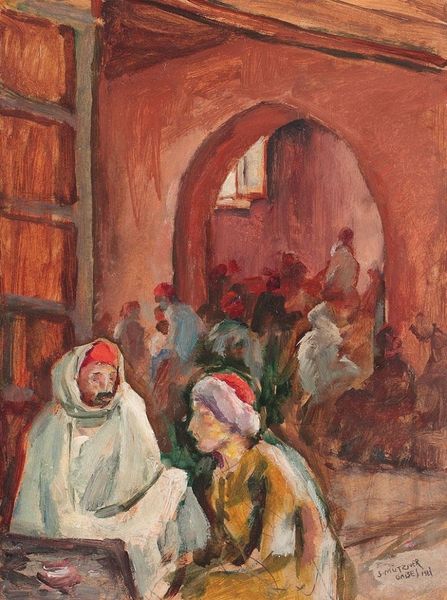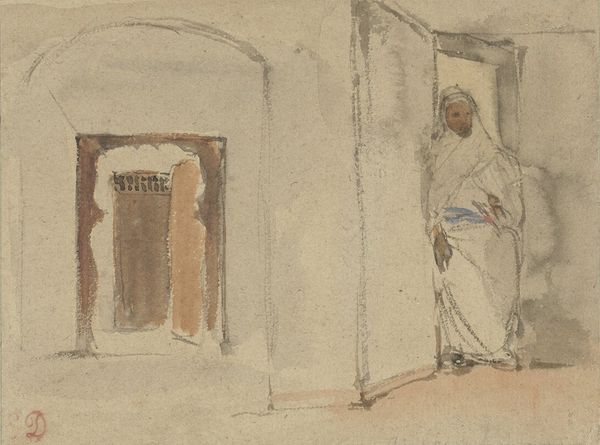
painting, oil-paint
#
portrait
#
painting
#
oil-paint
#
oil painting
#
orientalism
#
genre-painting
#
watercolor
#
realism
Copyright: Public domain
Editor: This is Vardges Sureniants' painting "In the Harem," its exact date is unknown, and it's an oil painting. At first glance, I'm struck by the muted colors and how they create a serene atmosphere. What do you see in this piece? Curator: This work really speaks to the problematic history of Orientalism in art. It invites us to consider the ways in which Western artists depicted the "Orient" through a lens often shaped by colonial power dynamics and romanticized fantasies. Editor: So, it's not just a simple portrayal of a woman in what's assumed to be a harem setting? Curator: Precisely. We have to ask ourselves, who is the intended audience? What preconceived notions are being reinforced or challenged? Consider the composition. How does it position the subject in relation to the viewer, and what does that imply about power and observation? What details contribute to an exoticized portrayal of the scene? Editor: I notice how the woman is presented, with the soft lighting, which is very different from Realism, with an evident desire to offer a spectacle. Curator: Absolutely. The use of "watercolor" and "oil paint," as well as the subject's clothes or accessories are all tools employed for creating a specific kind of "Oriental" aesthetic, which perpetuated certain stereotypes. The "realism" you noted plays into that by lending an air of authenticity. Is it truly authentic, though, or merely a carefully constructed performance? Editor: That’s interesting, because looking at her pose, the book on the carpet and the background, makes me think that there may be some hint of intimacy, of a domestic interior scene. Curator: A crucial element is reflecting on how such representations impact our understanding of different cultures, specifically regarding race, identity and politics. We should aim for art criticism and historical analysis to create the conditions for intercultural awareness. Editor: I never thought about it that way, focusing on those social impacts, but now I'll have it in mind. Curator: Indeed, those pieces urge us to contextualize representations as social and historical narratives.
Comments
No comments
Be the first to comment and join the conversation on the ultimate creative platform.
